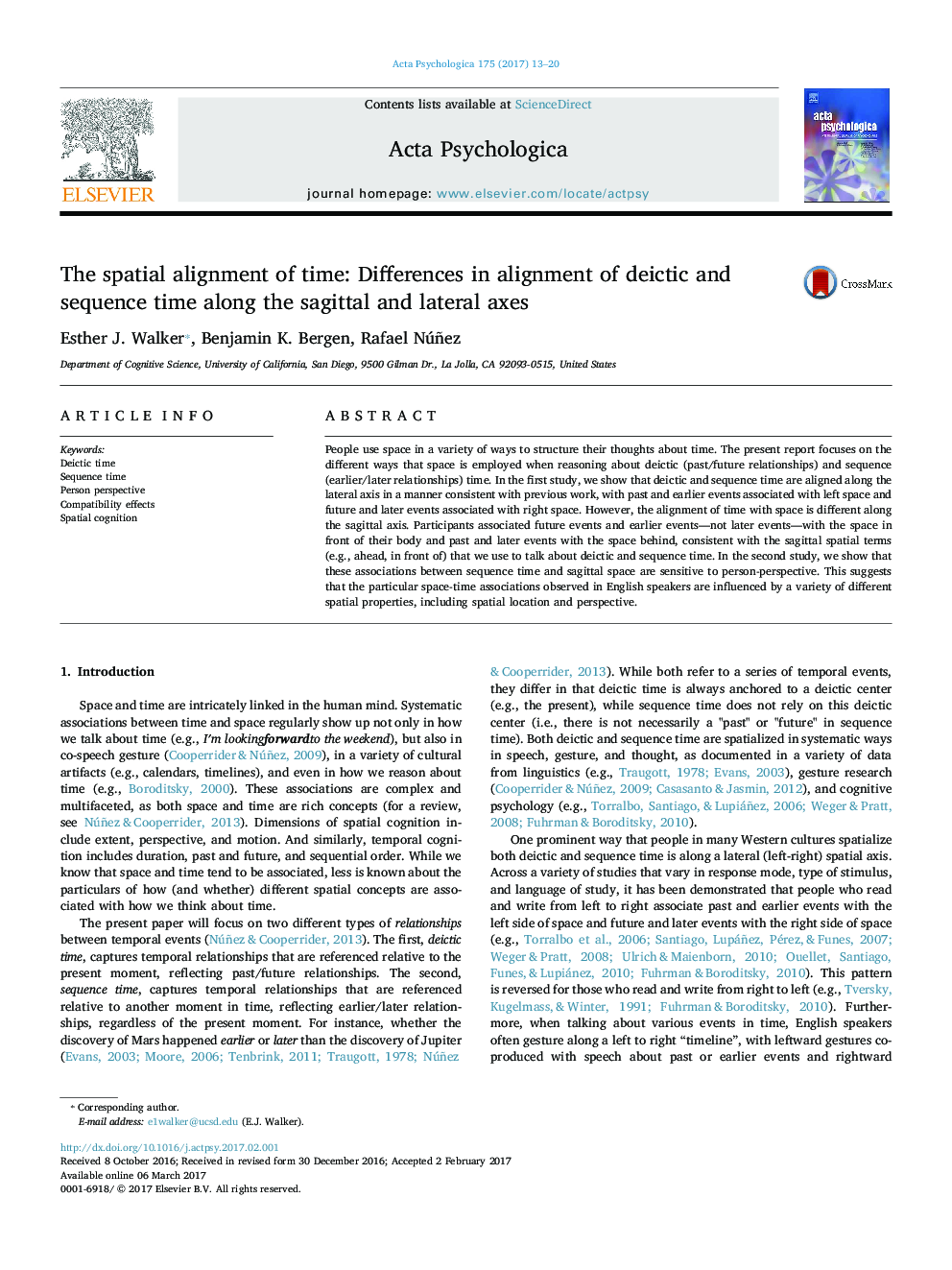| Article ID | Journal | Published Year | Pages | File Type |
|---|---|---|---|---|
| 5040306 | Acta Psychologica | 2017 | 8 Pages |
â¢Participants made two types of temporal judgments along two different spatial axes.â¢Associations between time and space differed depending on the spatial axis used.â¢Sequence judgments along the sagittal axis were sensitive to person-perspective.â¢Various spatial properties influence the construal of different relationships.
People use space in a variety of ways to structure their thoughts about time. The present report focuses on the different ways that space is employed when reasoning about deictic (past/future relationships) and sequence (earlier/later relationships) time. In the first study, we show that deictic and sequence time are aligned along the lateral axis in a manner consistent with previous work, with past and earlier events associated with left space and future and later events associated with right space. However, the alignment of time with space is different along the sagittal axis. Participants associated future events and earlier events-not later events-with the space in front of their body and past and later events with the space behind, consistent with the sagittal spatial terms (e.g., ahead, in front of) that we use to talk about deictic and sequence time. In the second study, we show that these associations between sequence time and sagittal space are sensitive to person-perspective. This suggests that the particular space-time associations observed in English speakers are influenced by a variety of different spatial properties, including spatial location and perspective.
